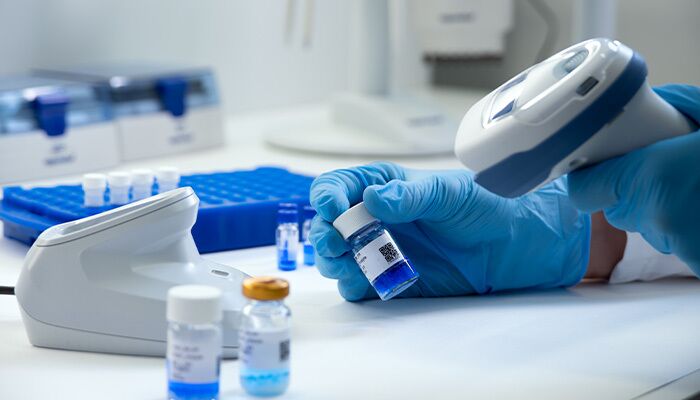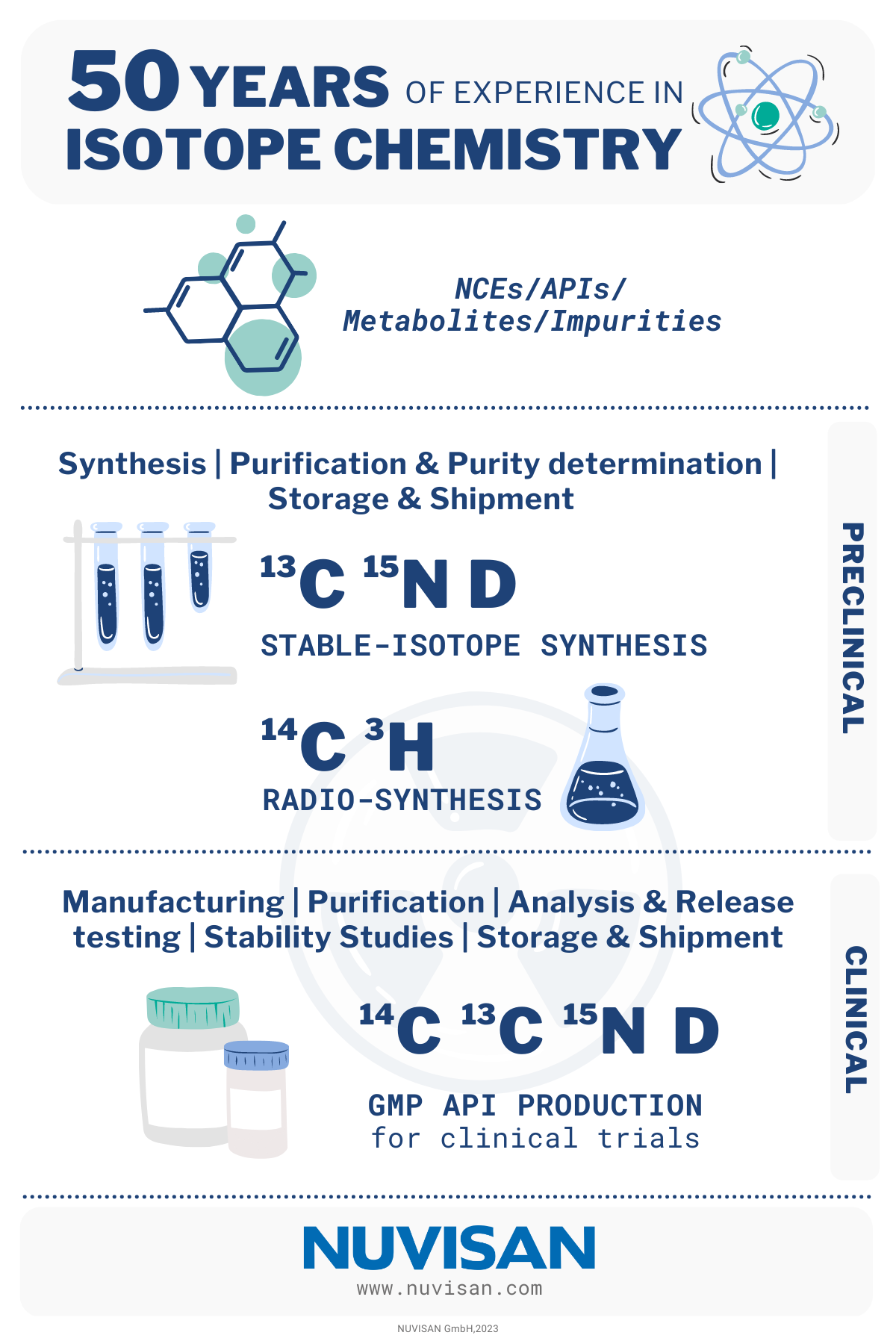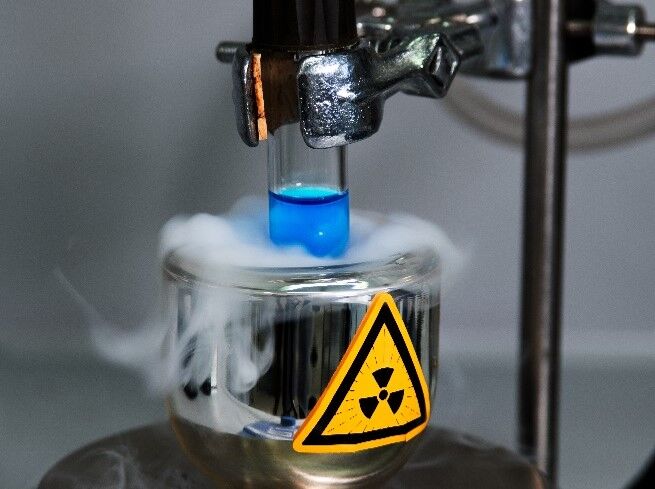Stable Isotope Synthesis (2H, 13C, 15N)
Stable isotope labeled compounds are used as internal standards in analytical chemistry to provide control for extraction, ionization, and injection variability and are thus essential components for robust mass spectrometry-based bioanalysis. Moreover stable label compounds have a use in mechanistic studies.
For its use as effective internal standard, the stable isotope labeled compound must show similar properties ideally resulting in identical chromatographic retention time, extraction recovery, and ionization compared to the analyte of interest, while mass spectrometric responses must be sufficiently resolved to enable identification of both substances.
Our team is skilled to cover a wide range of chemistry with vast experience in different transformations and chemical reactions. We have successfully delivered reams of stable isotope labeled molecules from a diverse spectrum of compound classes, including small molecules, peptides, carbohydrates, lipids, and many more.
Radioactive Isotope Synthesis (14C)
The rationale for selection of carbon-14 in the radiolabeling of drug substances lies in the ability to substitute particular carbon-12 atoms in a molecule by carbon-14 to produce chemically identical analogues.
Prior to synthesis, we identify an appropriate position of the radioactive label that is expected to be chemically and metabolically stable. Incorporation of carbon-14 into the target molecule requires the total synthesis from basic precursors such as 14C-cyanide.
Our synthetic expertise and application of the latest methods and techniques including enantioselective synthesis and chiral separation allows us to synthesize almost any achiral and chiral chemical compound. Typical batch sizes are in the range of 400 MBq, considered sufficient to execute entire preclinical DMPK programs. If necessary, we can supply larger quantities, which are frequently essential for conducting environmental safety studies.
All radiolabeled compounds are released with a comprehensive certificate of analysis (CoA) comprising chemical and radiochemical purity by HPLC, LC-MS, NMR, and radio-thin layer chromatography (TLC) analyses as well as enantiomeric purity (if applicable).
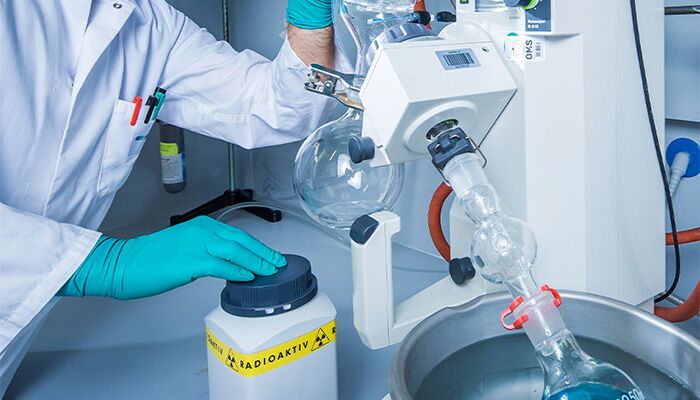
GMP Radioactive Synthesis (14C)
NUVISAN has invested in commissioning a GMP-facility dedicated to the radio synthesis of carbon-14 labeled drug substances (active pharmaceutical ingredient, API) for human mass balance (hADME) studies.
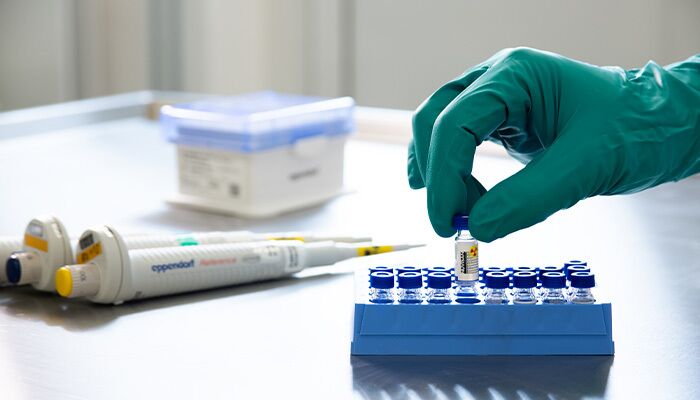
Radioanalytical And Purification Solutions
We routinely analyze your radiolabeled compounds with state-of-the-art methods and equipment comprising radio thin layer chromatography (TLC), UPLC/HPLC coupled to UV, PDA, MS, and on-line radio detectors as well as with a 400 MHz NMR. All relevant instruments are maintained in validated and qualified states to produce reliable data. You will receive a comprehensive certificate of analysis (CoA) for your radiolabeled compound.
Purification of radiolabeled compounds is usually performed by preparative HPLC or flash chromatography. With our dedicated equipment we are able to purify compounds to a radiochemical purity exceeding 98%.
Radioactive Compounds Storage Solutions
The site in Grafing has large capacities to store radiolabeled compounds at various temperatures from –80 to +5°C in controlled and monitored chambers as well as APIs at room temperature (+20 °C).
We can arrange worldwide shipment by personnel trained in Good Distribution Practices (GDP) using qualified couriers.
Reanalysis and repurification can be performed on short notice prior to shipment or use of radiolabeled compounds in NUVISAN (in-house) studies in order to meet the timelines of your project.
